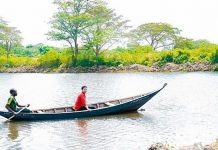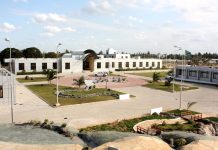AfricaPress-Tanzania: WHEN inaugurating the 45th Dar es Salaam International Trade Fair (Sabasaba) that took place from 28th June to 13th July 2021, Vice President Dr Philip Mpango, challenged the organizers, Tanzania Trade Development Authority (TANTRADE) to be more innovative to attract more international-exhibitors and open doors for local producers.
Dr Mpango also called on the institutions dealing with trade and investment to use the trade fair to resolve bottlenecks facing traders and business investors to expand their businesses. Rightly so. For more than 12 years, I have been an active ‘Sabasaba’ participant in official and personal capacities. During this time, I have witnessed some improvements in many lamented areas. More is still desired if we are to get the levels to attract more and large-scale exhibitors. We are still falling short in areas of infrastructure in terms of the venue size and location, the event repackaging and branding, and adoption of modern technology.
DITFwith competitive advantages
DITF, which started in 1963, has established itself as one of the prime trade events in East Africa, forming a platform to serve as a mediator between the national sellers and foreign buyers. Contrary to many trade fairs in the region, the DITF enjoys competitive advantages in terms of the services of the Dar es Salaam Port, which serves as a getaway to several land-locked neighbours, the better connection of railway terminus and roads, tourists’ attractions and a better political and business environment.
However, things haven’t gone auspicious for DITF. The biggest challenge is that it has outgrown its current home, the Mwalimu Nyerere Trade Fair Grounds at Kurasini area. As a result, it is becoming difficult to accommodate all wishers and complicates the allocation of exhibitors as per products offered. I applaud the current move to set exhibitors into categories of agriculture, mining, and entrepreneurs. However, one would wish for more specialized zones in the future, such as electronics, appliances, manufacturing, and the likes, to help serve time, especially for serious buyers and attendees.
There is no question that the venue size challenge will only get worse. Official records have indicated that the number of local exhibitors has been steadily declining each year, so does that of foreign exhibitors, bar the pandemic outbreak last year.
It is now time to look for a permanent solution. Either by embarking on an expensive vertical expansion strategy by constructing sky-rise exhibition buildings or move to a more spacious location. Areas like Kigamboni offer an attractive solution to set up a permanent exhibition village that can be accessed all year, allowing other businesses such as banks or heavy mechanical equipment sellers to have permanent outlets.
Two weeks are too short
The current modality of two weeks in a year exhibition needs to be relooked at; it is costly and proves to be a burden to exhibitors, specifically those obliged to invest in secured buildings structures. If you throw in investments and operational costs, it is hard to fathom that only two weeks of the exhibitions can cut it. It is high time to start undertaking DITF twice a year, for three weeks each. The two stints of DITF in a year, each of three weeks, will give ample room for sales and exhibitions. It can then be decided that each three weeks stint will feature what particular products. One of the most famous trade fairs globally, Canton Fair, in Guangzhou, China, is held twice a year for three weeks. There’s no shame in the smart copy here.
Virtual Fairs are the new norm
COVID-19 has taught us one big lesson. We can still survive and do business with limited physical meetings. This year’s online Canton Fair in China attracted more than 26,000 companies from across the world. Many of them attended the online event via live streams. I understand there were talks of encouraging the same at DITF the previous year; let’s put this in motion. I am sure plenty of internet companies will jump at the chance of being the sole sponsor of the virtual part of the fairs. A hybrid of physical and virtual trade fairs is the best way forward.
Create attractive participation and recreation package
To attract international exhibitors, we need to repackage our participation offerings. Why not attach a chance to visit Zanzibar or Mikumi in the package? Who wouldn’t jump at the opportunity to do business and recreation at the same time? Few, I bet.
One-stop-shop for business facilitation
Even though one can see the need for government wings and Parastatals at the fairs, it should primary for business-related functions such as Brella, Tanzania Investment Center, NEMC, SIDO, and the likes. It should be possible to initiate or even register companies on the grounds. Provided all documentations are in place.
Cashless is the way
Still, most payments such as car parking and entrance fees are made on cash basis. Posing some serious security risks to both exhibitors and buyers. I think it is time to do away with this model. Discouraging cash payments will not only improve security but will also ensure all the revenues are collected efficiently.







